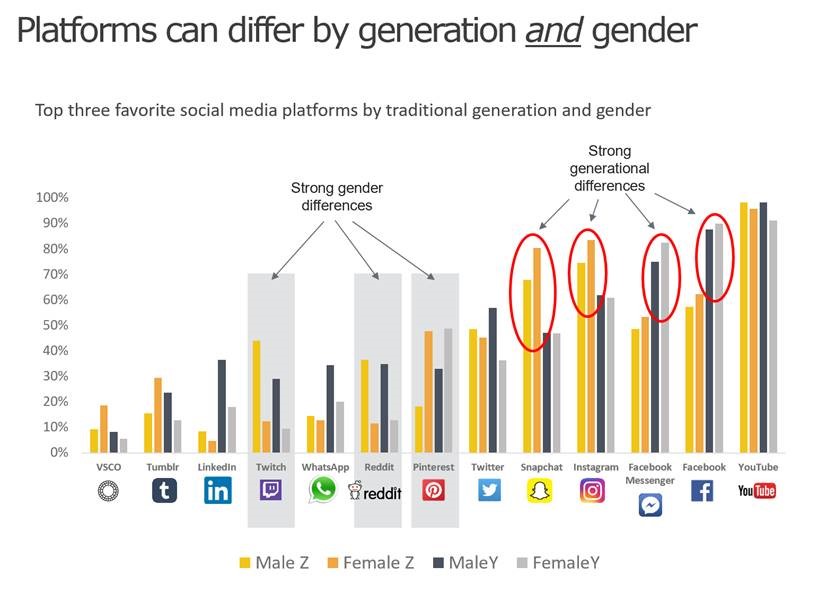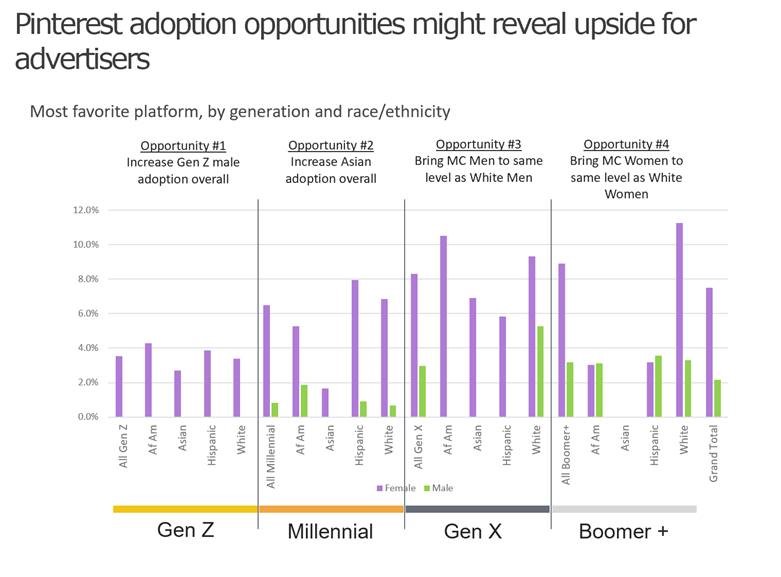Investors Loved the Pinterest IPO, But is it Just a Refuge for Gen X White Women?
The IPO of Pinterest last week could only be described as good news for its shareholders, making its co-founder and CEO Ben Silbermann an overnight billionaire.
If you don’t know Pinterest that well, you might think of it as the ad sales platform dominated by female users, as aptly described in the company’s IPO filing, here and elsewhere. On most platforms, ads are interspersed with user content, essentially competing for user attention. But in Pinterest, ads are described in their filing documents as “native content,” whose imagery is associated with content collected by Pinterest users (Pinners) on their boards. Additionally Pinners build community around the positive inspiration that arises from imagery, and in this respect the platform is notably free of the polarizing content and negative emotion that can place brands in the cross-fire.
In other words, Pinterest appeals to a collectivist mindset, building community around shared inspiration that is notably free from a shared “dislike” of something “other.” Given that collectivism is a dominant trait of multicultural, younger-skewing audiences, how does Pinterest user adoption look in these segments? And furthermore, do we see any evidence that Pinterest can appeal to men?

Our 2018 research into the social media usage produced for both our genYZ and Latinum platforms offers some interesting insights to marketers thinking of advertising on the Pinterest platform. Our research incorporated a representative sample of 2782 consumers across both race and ethnicity, and generation. Firstly, let’s take a look at the following chart showing consumers’ top three platforms, by gender and by Gen Z and Millennial. Overall, the data show how platform preference can vary significantly when it comes to gender and generation. Zooming into Pinterest, note that the percentage of Millennial Males (dark gray) including Pinterest in their top three is about the same as for Reddit, Whatsapp and even Twitch – that bastion of video game-obsessed Gen Z men.
The second chart below shows the percentage of respondents saying Pinterest was their favorite platform overall. We like this chart because it reveals early adoption patterns that may imply opportunities to grow adoption for certain segments. Overall, we can indeed see how female dominate Pinterest is across every single segment. But there are some interesting opportunities for Pinterest to expand within each generation that in turn reveal opportunities and risks for advertisers. Let’s go through them by generation:
Gen Z: Pinterest’s most obvious opportunity is to increase the appeal of the platform to Gen Z males for every demographic. The immediate question might be to ask what lessons can be learned from Twitch. If so, perhaps we should think laterally: it may not be the obvious opportunity to, for example, foster the collection of video snippets of gamers, but rather to connect to the resurgent interest in Dungeons and Dragons or MCU collectibles. For advertisers set on reaching Gen Z males, the second tier priority (after Snapchat and Instagram) remains Twitch, but keep your ear to the ground.
Millennials: Where are Asian Millennials? Penetration is notably weak for Asian Millennial females and non-existent for males. While this is certainly a red flag for advertisers (and an opportunity for Pinterest), take note also of interest among African American Millennial males despite lower interest among African American Millennial females.
Gen X: No news here among females: women across race & ethnicity are confirmed as the core of Pinterest’s user base, but there are interesting variations. Note the disparity between African American vs Hispanic women. As revealed in our Essentials research, these two demographics drive significant influence across the social media universe in general. But advertisers should not conflate the two groups as they are respectively the demographics that Pinterest has most and least penetrated. By contrast, take a look at Gen X White males and then look across to Boomer males. Does adoption of Pinterest among Boomer+ African American and Hispanic males imply that the Gen X adoption by White males could be broadened? Advertisers take note of the opportunity to reach older males across all race/ethnicity segments.

Boomer+: Newsflash: Boomer+ Multicultural women show surprisingly weak interest in Pinterest, while Boomer+ White women are the single most dominant segment. Pinterest has a “just do it” opportunity to expand here, but advertisers looking to appeal to older Multicultural women using Pinterest may wish to ask for more evidence of adoption from Pinterest sales reps. The Boomer+ Asian segment is also surprisingly weak.
Use these insights to optimize digital channels strategy for select segments.
- Lead with older-resonant content when advertising on Pinterest, focusing on women across race and ethnicity.
- While Gen X White men are the dominant male segment, the data suggest you consider advertising to attract older African American and Hispanic men.
- Find another platform to reach your Asian consumers.
To place these insights into context, be sure to attend our upcoming webinar on the Essentials of Gen Z and Millennial Marketing or review our recent work on the Essentials of Multicultural Marketing. Contact your Client Services representative to learn more about how Collage Group can help you better appeal to Multicultural and Generational segments by using our CultureRate:Ad technology, participating in our benchmarking initiative and commissions custom engagements.
Stay Informed
Email *:
MARKET RESEARCH
SOLUTIONS
fluen.ci App for Cultural Insights
Consumer Research Data & Tools
RESOURCES
Webinar & Events
ABOUT
Who We Are
Collage Group is a certified Minority Business Enterprise (MBE) by the National Minority Supplier Development Council (NMSDC).
©2023 Collage Group

4550 Montgomery Avenue
Bethesda, Maryland, 20814
(240) 482-8260
Stay Informed
Email *:


Collage Group is a certified Minority Business Enterprise (MBE) by the National Minority Supplier Development Council (NMSDC).
©2023 Collage Group

